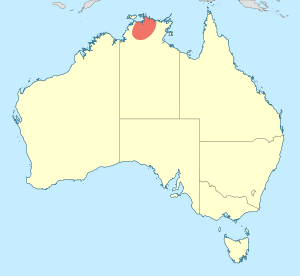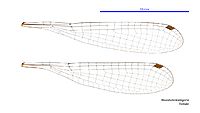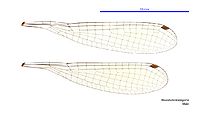Citrine threadtail facts for kids
Quick facts for kids Citrine threadtail |
|
|---|---|
| Conservation status | |
| Scientific classification | |
 |
The citrine threadtail (scientific name: Nososticta koongarra) is a special kind of damselfly found only in Australia. It belongs to a family of insects called Platycnemididae. These amazing insects are known for their slender bodies and beautiful wings.
Meet the Citrine Threadtail
The citrine threadtail is a small and very thin damselfly. It has unique colors that help you tell the males and females apart.
- Male Citrine Threadtails: Males are mostly black. They have bright blue markings that stand out, and their wings have a yellowish tint.
- Female Citrine Threadtails: Females are also black, but their markings are yellowish-white. Their wings are clear, without the yellow tint seen in males.
These damselflies were first described by scientists Tony Watson and Günther Theischinger in 1984.
Where Do They Live?
The citrine threadtail has a very specific home. It has only been found in one area: the Arnhem Land escarpment in the Northern Territory of Australia. This region is known for its rugged cliffs and beautiful landscapes.
These damselflies love to live near streams. They need clean water to lay their eggs and for their young (called nymphs) to grow. The streams in Arnhem Land provide the perfect habitat for them.
Why Are Damselflies Important?
Damselflies, like the citrine threadtail, are important parts of their ecosystems. They help control insect populations by eating smaller insects, especially mosquitoes. Their nymphs also play a role in freshwater environments.
Because the citrine threadtail is only found in one small area, it's important to protect its habitat. Scientists keep an eye on its population to make sure these unique creatures continue to thrive.
Gallery




